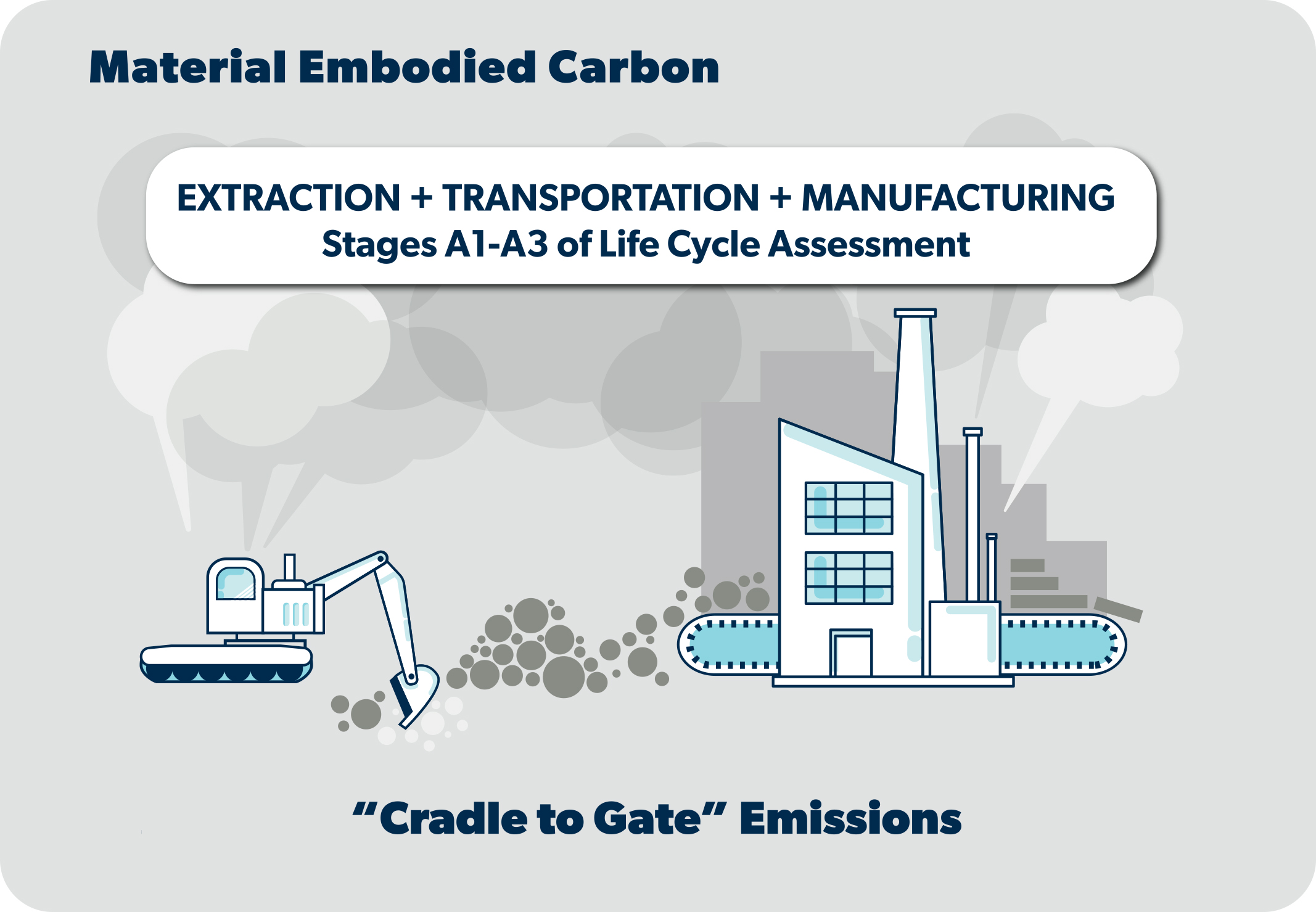Material Carbon Emissions Estimator (MCE2)
MCE2 is designed for Canada’s home building industry. It quantifies the greenhouse gas (GHG) emissions associated with specific low-rise, residential building designs by providing two important estimates:
- the GHG emissions associated with manufacturing required building materials
- the estimated GHG emissions from operating the home (calculated using results from a HOT2000 energy model)
Together, these results predict the overall GHG impact on the climate of a new home or renovation (its carbon use intensity, or CUI) and provides industry with insights for reduction opportunities.

Material embodied carbon
Text version
Material embodied carbon encompasses emissions from resource extraction, transportation, and from manufacturing associated with residential building (thereby encompassing emissions from stages A1-A3 of Life Cycle Assessment). These emissions are called “cradle to gate emissions”.
The tool allows users to compare materials on a component-by-component basis, as well as by whole assemblies. The majority of a building’s high impact materials are represented in the calculator. NRCan has included a wide range of structure and enclosure assemblies and materials, as well as many common cladding, sheathing and finishing materials for residential construction.
Download MCE2
- The MCE2 tool (xls, 4 MB) calculates project-specific estimates based on user inputs
- The MCE2 user guide (PDF, 2 MB) describes the significance of material carbon emissions, and provides instructions on how to use the tool
Related resources
Page details
- Date modified: